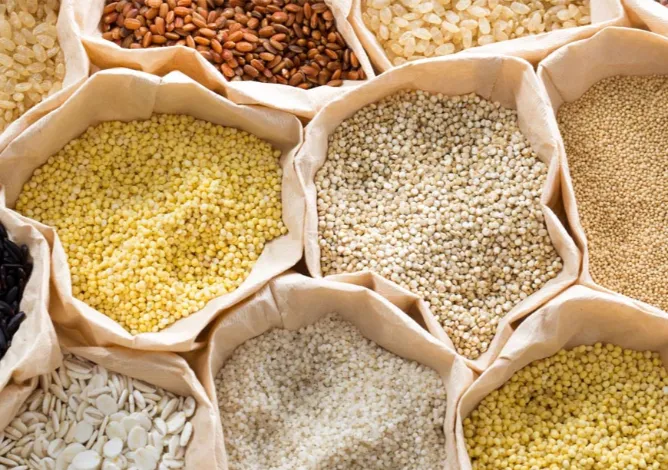
Millets Impact on Climate Change
, by saikat dutta, 4 min reading time

, by saikat dutta, 4 min reading time
Millets Impact on Climate Change ? In a world grappling with the devastating effects of climate change, we're constantly searching for solutions. From transitioning to renewable energy to reforesting our landscapes, the fight for a sustainable future requires a multi-pronged approach. And nestled within this intricate web of solutions lies a humble grain – millet.

This ancient grain, often overlooked in favor of its more popular cousins like rice and wheat, holds the potential to be a powerful ally in the battle against climate change. So, how exactly can a seemingly simple grain like millet contribute to a healthier planet? Let's delve deeper into its remarkable capabilities.
Millet: A Climate-Smart Crop
Millet's potential for climate action stems from its inherent resilience and adaptability. Unlike many other staple crops, millet thrives in challenging environments, making it a valuable asset for regions facing drought, heatwaves, and erratic weather patterns. Here's a closer look at its climate-friendly attributes:
1. Water Efficiency:
Millet requires significantly less water than other major cereals like rice and wheat. This remarkable water efficiency makes it a perfect crop for regions grappling with water scarcity, a growing issue exacerbated by climate change.
2. Drought Tolerance:
Millet's deep root system allows it to access water deep within the soil, enabling it to survive and produce harvests even in drought-stricken conditions. This resilience makes it a crucial food source in regions facing recurring droughts, a phenomenon intensified by climate change.
3. Heat Tolerance:
Millet can withstand high temperatures that would cripple other grains. Its ability to thrive in scorching environments makes it a valuable option for regions experiencing rising temperatures and heat waves, a direct consequence of climate change.
4. Soil Health:
Millet's shallow root system helps in minimizing soil erosion, crucial for maintaining soil fertility and preventing desertification. This contributes to overall ecosystem health, mitigating the negative impacts of climate change on agricultural lands.
5. Carbon Sequestration:
Millet's deep root system plays a role in carbon sequestration, drawing down atmospheric CO2 and storing it in the soil. This natural carbon capture mechanism contributes to mitigating climate change by reducing greenhouse gas concentrations.
Millet Beyond the Farm: A Sustainable Food System
The benefits of millet extend far beyond the farm, impacting the entire food system:
1. Reduced Greenhouse Gas Emissions:
Growing millet requires less water and energy compared to other staple crops. This reduction in resource consumption leads to lower greenhouse gas emissions associated with agriculture, contributing to a more sustainable food system.
2. Enhanced Food Security:
Millets Impact on Climate Change? Millet's adaptability and resilience make it a crucial food source in regions facing food insecurity exacerbated by climate change. Its ability to thrive in challenging environments ensures a stable supply of food, reducing the risk of famine and malnutrition.
3. Dietary Diversity:
Millet is a nutritious and versatile grain, rich in essential nutrients like iron, magnesium, and fiber. Promoting millet consumption can enhance dietary diversity, leading to healthier populations and stronger communities, particularly in vulnerable regions affected by climate change.
The Path Forward: Promoting Millet for a Sustainable Future
Millets Impact on Climate Change? Millet's potential as a climate-friendly crop is undeniable. However, realizing its full impact requires a concerted effort. Here's what we can do:
Millets Impact on Climate Change? By embracing millet, we can create a food system that is both climate-resilient and nutritionally rich. It's time to champion this humble grain, recognizing its potential to build a more sustainable future, one grain at a time.


